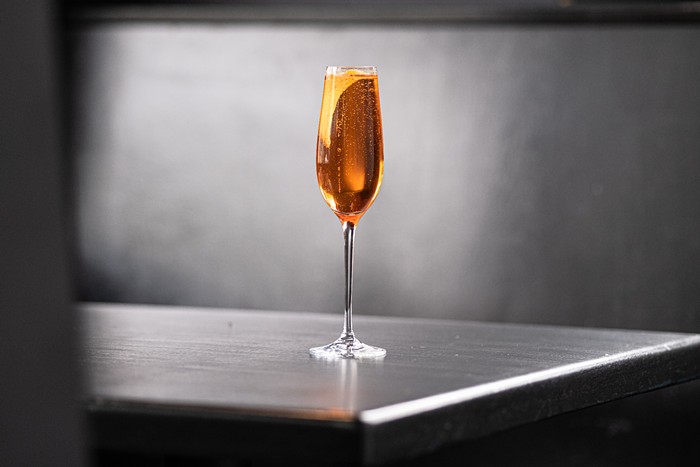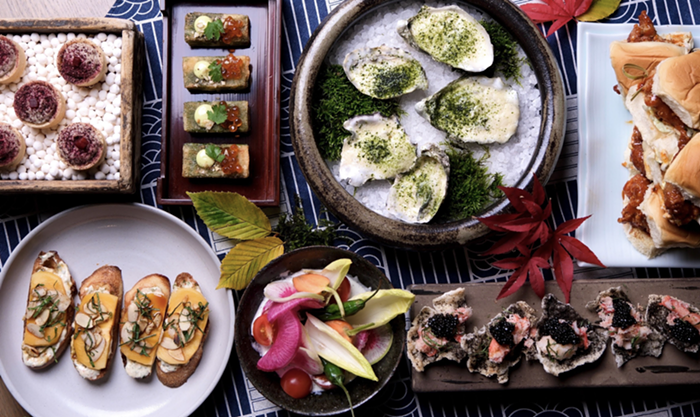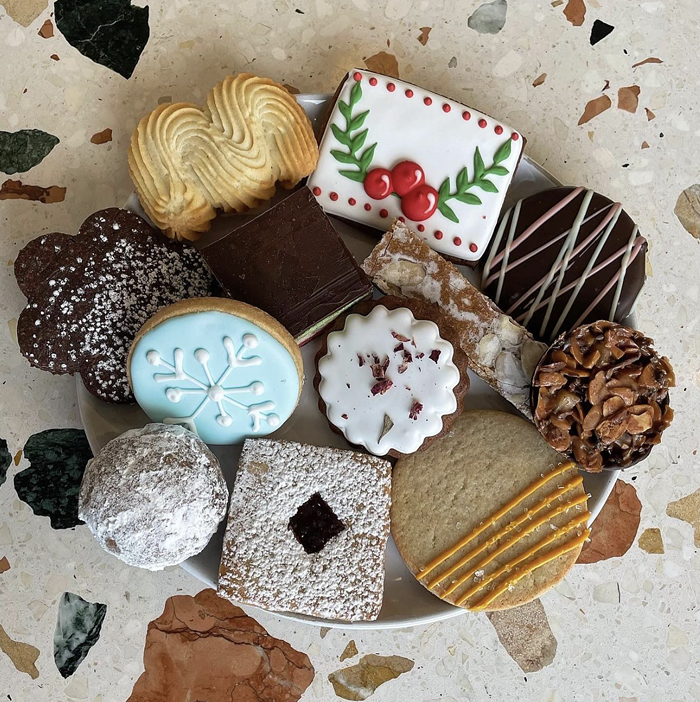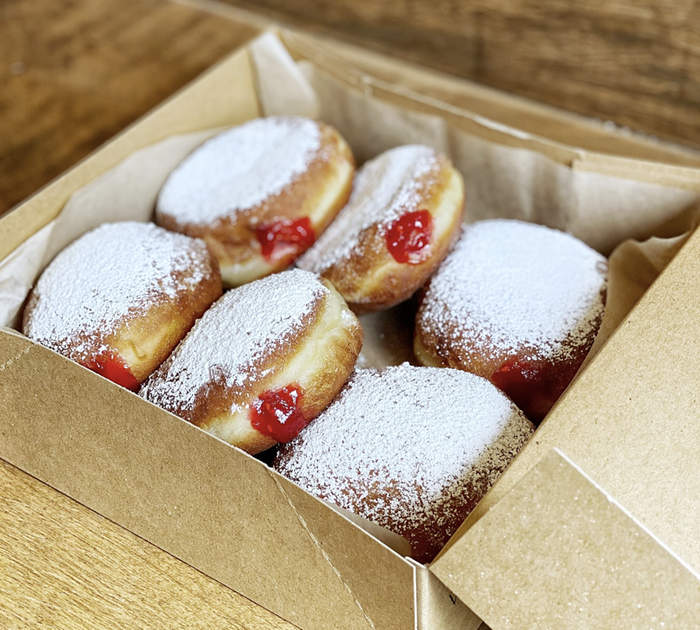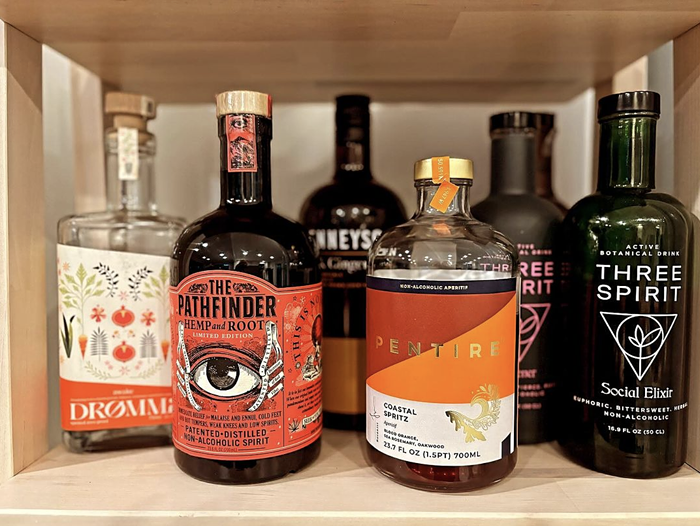601 S King St, Suite 202, 382-0662
Open daily 11:30 am-midnight.
Maekawa Bar
601 S King St, Suite 206, 622-0634
Mon-Thurs 6 pm-midnight, Fri-Sat 6 pm-2 am.
Located at the bottom of the International District, in an area that used to be part of Little Tokyo (before it was emptied by the internment camps), and across the street from where the Uwajimaya supermarket used to be, is a blank brick box that does not have a proper name. As if to save time and effort, the developers gave it the name of its address--601 S. King Street. Designed by local architect Joji Minatogawa and constructed in 1993 to replace an earlier building that burned down in 1988, 601 S. King Street could have been called 601 Mall, or King Street Mall, or King Mall, but that would not only have been a hassle but would also have glorified something that was not at all glorious. Naming it by its address was the most honest thing to do.
In Vancouver, BC, 601 S. King Street would be what it is--unremarkable. There, you could spend a lifetime counting the number of malls that look exactly like it. Stuffed with small restaurants, shops, and agencies that sell insurance or vacations, these buildings are everywhere. They line Broadway, Granville, and even parts of Robson Street. Some have escalators, many have vacancy signs, and all could be knocked down in a second and forgotten forever. But in Seattle, 601 S. King Street is what it was never meant to be--remarkable. Remarkable because it stands alone. It is a replication of what has not been replicated here. Drive around the city and you'll see there are very few or absolutely no malls that match it.
Like its cousins in Vancouver, 601 S. King Street is filled with businesses that are small or tiny. On the ground floor of its Sixth Street entrance there's a travel agency, a store that sells models of Japanese robots, a mysterious club called Venus Karaoke, a store by the name of Candy and Cigarettes, and an Asian specialty video shop called Video Hop. A turgid twist of what has to be the most inelegant staircase in our city leads up to the hanging second floor, which is occupied by two cozy Japanese restaurants. On the right side is Fort St. George; on the left is Maekawa Bar.
For a view and booze, Fort St. George is recommended; for food and atmosphere, Maekawa Bar is considerably the better choice. Fort St. George looks out at a part of downtown that is dominated by the Bank of America Tower; from this perspective one would think that it was the only major skyscraper in town, soaring alone into the clouds or the blue of a clear day. At the end of the restaurant is a full bar that's patronized by older adults, and adjacent to the entrance is a dining section that's patronized by younger adults--some on dates, others reading comic books that they've brought or borrowed from the restaurant's small but packed comic book library. The menu is defined by Japanese interpretations of American dishes: spaghetti, hamburgers, fried chicken.
For example, one of the spaghetti dishes, Tarako ($9 at dinnertime; $7 at lunch), has noodles that are packed together like a pile of rice, covered with shimmering shreds of seaweed, and filled with white cheese and fish eggs. There's little in this dish that tastes American, or Italian, for that matter; it is distinctly Japanese. The same is true for the fried chicken ($9). Though it is fried, no one in Kentucky would recognize it as chicken. It looks instead like deeply fried sea creatures that are served with a dipping bowl filled with raw salt and black pepper.
In the afternoon, if you order a dish like the garlic pepper chicken ($6) or ginger pork (also $6), the meat is accompanied by a small heap of spaghetti with red sauce. But still the spaghetti doesn't taste American. Something in the sauce prevents it from being what it looks like--your eyes see American noodles, but what you taste is something that complements the Japanese-seasoned and prepared meats. The dislocation between the symbol and the substance delights each bite.
At Maekawa the situation is very different. Hanging above the Video Hop, with its glass wall facing the glass wall of Fort St. George (which hangs above the travel agency), Maekawa is more traditional looking. Decorated with various Japanese images and ornaments, the restaurant is organized around what looks like a sushi bar but isn't (it's a dead grill). Maekawa doesn't serve sushi, only various Japanese appetizers and meals. What I have eaten at Maekawa--the broiled mackerel ($8.75), marinated boneless chicken ($8.75), and assorted tempura ($9.50)--has consistently been surprisingly good. The food is cooked with more care and creativity than one might expect from a modest restaurant in a mini-mall. In this respect, however, Maekawa, like the building that accommodates it, is closer to Vancouver, where malls like 601 S. King Street frequently contain the best restaurants. With Seattle, the character of a building often indicates the character of its residents; in Vancouver, the character of the building might be generic but often its residents are unpredictable.
The effect of leaving 601 S. King Street is intoxicating. After drinking at Fort St. George, or dining at Maekawa, you descend the ugly staircase. The surrounding panels of glass enclose or reflect what you believe are the very same types of spaces (shops, offices, restaurants) in the other, identical mini-malls that seem to be rowed along the street. The city is now infinite; a place where the word "architecture" has lost all importance and pretensions, and what is left are these manufactured brick-and-glass boxes that do not issue from a single creator or imagination but from the boardrooms of developers who do not have the time or energy to give their products proper names. But once you've left the building, the illusion instantly vanishes. This is not one building among thousands but only one mini-mall in the middle of nowhere.

